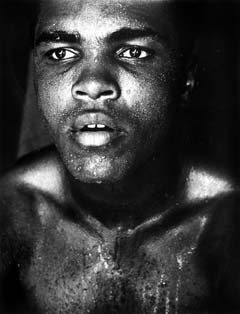
Imagine the first day you held a camera in your youth. Remember the first time you heard the camera click, saw the light flash and the felt the servos whirr in your palms, the fact that you had captured that moment for eternity? In that very second you had taken your first steps into the beautiful, surreal and sometimes terrifying world of photography. You could look back on that moment fondly. Such memories are to be treasured.
But, did you ever stop and think? Did you realise that the moment you started your travels in the realm of taking photographs, that perhaps your photos could change the world? You'd be shocked deeply, and perhaps you'd be too scared to lift a camera again if you knew the true power of what you held in your fingertips. Perhaps you didn't think that, at some point, a photo you took could divide opinion, raise anger in the calmest of people, turn friends into enemies, and cause bitterness in a whole generation of people.
Did the now world famous photographer, Thomas Hoepker, think about this When he was 16 and his grandfather gifted him his first camera? Did he ever stop and think of the potential his photos could have? Perhaps, perhaps not. I'm sure he would never have realised back then, that on the fateful day of the September the 11th 2001 atrocities he would capture a single moment that would spark a decade of anger, shock, sadness, and vicious debate among not just a few people, not just an entire country, but the whole world.
The Image Maker
Thomas Hoepker is a native German, born in 1936 in Munich. After World War 2, on his 16th birthday, his grandfather bought him a 9x12 glass plate camera. As an industrious and savvy young fellow, Hoepker took pictures of anything and everything, and developed the photos in his kitchen and bathroom and made some money by selling the pictures to friends and peddling them on the streets to strangers.
He eventually moved on to marry his first wife, Eva Windmoller, and together they moved to Berlin. Eva was a journalist, and together with his wife Hoepker took photographs for articles detailing life in East Germany during Socialist rule that helped the West understand what it was like, as very little was known.

In 1964 Hoepker joined the world renowned photographic agency "Magnum", and became fully accredited by them in 1989. He was also the first German to become president of Magnum, from 2003 to 2006.
Thomas Hoepker's Magnum Page
Hoepker is well known for his photographic style, using a wide palette of colours. He was one of the favourite photographers of multi world title winning boxer Muhammad Ali.




